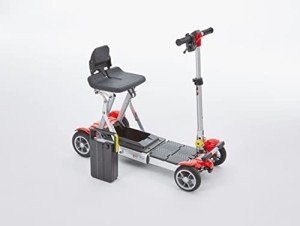5 Laws Anybody Working In Portable Mobility Scooters Should Know
Portable Mobility Scooters: Enhancing Freedom and Independence
As the world progressively moves towards inclusivity and accessibility, portable mobility scooters have actually become an advanced service for individuals with mobility difficulties. These compact, easy-to-transport scooters are created to empower users with the ability to navigate their environments with self-confidence and ease. In this post, we will check out the characteristics, advantages, and considerations when choosing for a portable mobility scooter, supported by tables and FAQs to provide a comprehensive summary.
Understanding Portable Mobility Scooters
Portable mobility scooters are lightweight, battery-operated lorries that supply an alternative mode of transport for those with restricted mobility. Compiled utilizing resilient products, they are particularly crafted to be lightweight and compact to facilitate simple transportation in lorries or on public transportation.
Key Features of Portable Mobility Scooters
Function
Description
Weight Capacity
Many scooters can support users weighing between 250 to 500 lbs
Battery Life
Normal variety of 10 to 30 miles per charge
Speed
Usually runs in between 4 to 8 miles per hour
Turning Radius
Differs from 32 to 60 inches, making them ideal for indoor usage
Foldability
Many models can be easily folded for transport
Wheels
Normally equipped with either solid or pneumatic tires
Portable mobility scooters are ideal for both indoor and outdoor usage, supplying stability and ease of movement.
Advantages of Portable Mobility Scooters
Boosted Freedom: Users can take part in activities that were previously challenging, such as shopping and mingling, consequently enhancing general quality of life.
Transport Convenience: Many portable scooters can be easily taken apart or folded, permitting users to transport them in cars, vans, or public transport.
Affordable: Compared to powered wheelchairs, portable scooters are often cheaper, providing an affordable service.
User-Friendly Design: Most designs feature instinctive controls, making them simple to run for individuals of any ages.
Range of Options: With many brand names and designs on the market, potential users can choose scooters that match their particular needs— ranging from off-road usage to compact indoor alternatives.
Important Considerations When Choosing a Portable Mobility Scooter
- Weight and Portability: Assess the weight of the scooter itself and its parts. folding mobility scooters with swivel seat are normally much easier to transport.
- Battery Life and Range: Consider how far you need to travel on a single charge. If you expect long journeys, a scooter with a prolonged battery life is vital.
- Size and Dimensions: Measure where you'll keep the scooter and ensure it fits conveniently in your automobile or home.
- Convenience Features: Look for scooters with adjustable seats, armrests, and other ergonomic functions for included comfort during use.
- Terrain Compatibility: If you prepare to utilize the scooter outdoors, guarantee it can handle numerous surfaces (e.g., gravel, lawn) with ease.
Factor to consider
Importance
Weight & & Portability
Affects ease of transport and storage.
Battery Life
Determines variety and freedom to explore.
Size
Important for storage and maneuverability.
Comfort Features
Enhances the overall user experience.
Surface Compatibility
Guarantees adaptability in outside conditions.
Often Asked Questions (FAQs)
1. How quick can a portable mobility scooter go?
Most portable mobility scooters can reach speeds between 4 to 8 miles per hour. However, the speed may differ based upon the model and the weight of the user.
2. Do portable mobility scooters require a license or registration?
In most countries, portable mobility scooters do not require a driver's license or registration, but it's necessary to inspect regional regulations.
3. What is the normal rate series of portable mobility scooters?
Rates normally vary from ₤ 600 to ₤ 3,000 or more, depending upon functions, brand, and specs.
4. Can portable mobility scooters be used on public transport?
Yes, lots of public transport systems accommodate portable mobility scooters, however it's a good idea to inspect in advance relating to policy information and space restrictions.
5. What are the maintenance requirements?
Routine maintenance includes battery checks, tire assessments, and keeping the scooter tidy. It's advised to seek advice from the user handbook for specific upkeep standards for your model.
Portable mobility scooters have ended up being a lifeline for many individuals seeking self-reliance and mobility in their everyday lives. Their convenience, ease of usage, and variety of available models enable users to select the ideal scooter to fit their way of life.
For anyone thinking about investing in a portable mobility scooter, it's essential to examine personal needs carefully and explore numerous alternatives on the market. With the right choice, these scooters can considerably boost mobility and assist in a more active way of life, ultimately causing enhanced health and health and wellbeing.
By comprehending the functions and aspects associated with picking a portable mobility scooter, users can take the first action towards claiming their flexibility when more. Whether for running errands, enjoying the outdoors, or merely moving around the home, portable mobility scooters redefine what it means to stay active and engaged in life.
